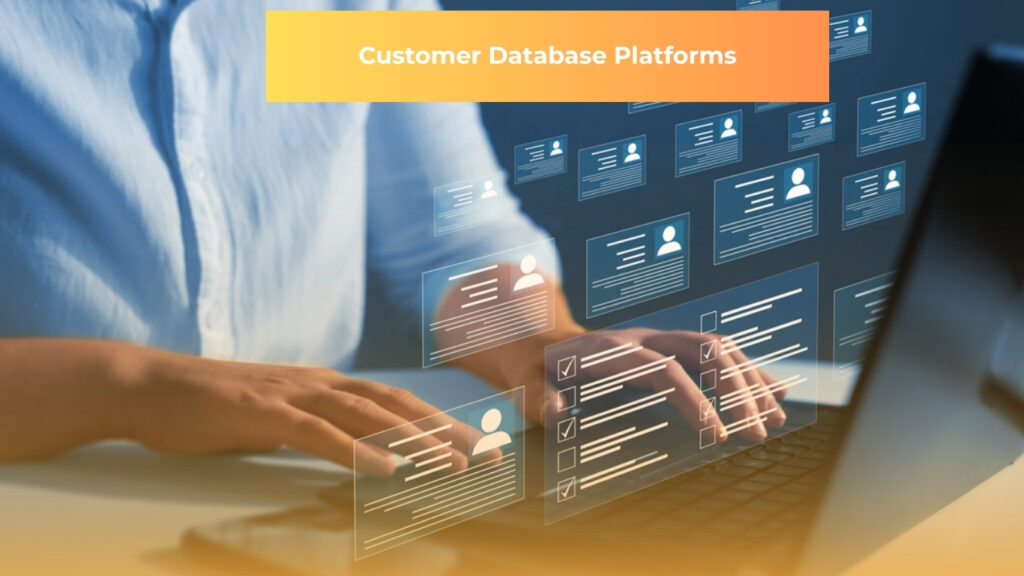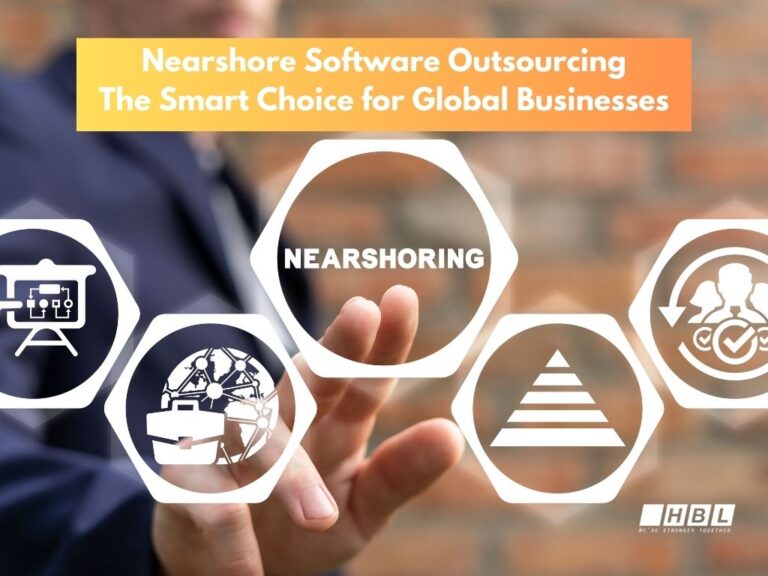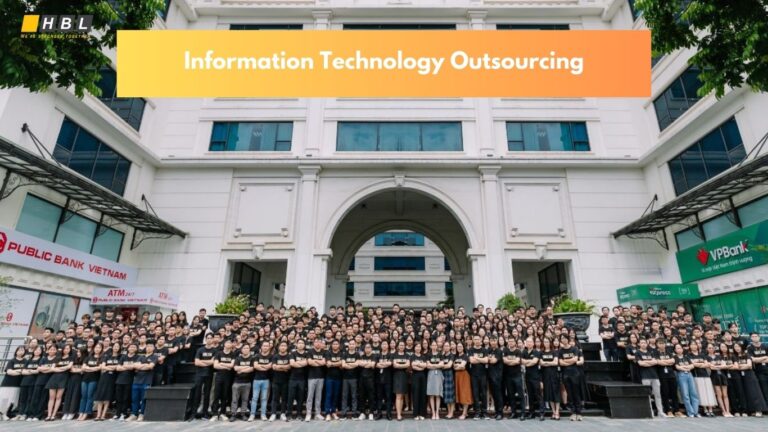Explore Customer Database Platforms in 2025: unify data, resolve identities, activate insights in real time, and boost ROI with AI-powered personalization.
What is a Customer Data Platform (CDP)?
A customer database platform (CDP) is a sophisticated software solution that unifies customer data from multiple sources into a single, comprehensive database for enhanced personalization and marketing effectiveness. Customer database platforms differ from traditional database systems by automatically integrating first-party, second-party, and third-party data to create what’s known as a “golden record” or unified customer profile.

A customer database platform functions as a centralized hub that collects customer information from various touchpoints including websites, mobile apps, CRM systems, email marketing platforms, social media, and point-of-sale systems. This unified approach enables businesses to deliver highly personalized, data-driven customer experiences across all channels and devices.
The core functionality of customer database platforms includes data ingestion, identity unification, segmentation, customer analytics, reporting, and real-time activation. Modern customer database platforms leverage artificial intelligence and machine learning to analyze customer behavior patterns, predict future actions, and automate personalized marketing campaigns.
How Customer Database Platforms Work
Data Collection and Integration
Customer database platforms connect to diverse systems across an organization using built-in connectors, SDKs, webhooks, and APIs. They collect structured, unstructured, and semi-structured data from multiple sources including CRM systems, e-commerce platforms, web analytics, social media, and IoT devices.
The platform uses schemaless ingestion to collect raw, event-level data without requiring predefined tables, which speeds up collection and adapts to changes in source systems. Data can be processed in real-time streams or batch loads, ensuring marketing teams have access to current customer information.
Identity Resolution and Data Unification
Once collected, customer database platforms perform customer identity resolution using sophisticated algorithms to stitch identifiers from multiple systems. This process occurs through two primary methods:
Deterministic matching uses unique identifiers like email addresses or customer IDs to match records with high confidence. Probabilistic matching analyzes various data points to estimate statistical likelihood that different identities belong to the same customer.
During unification, data is validated, cleaned, and deduplicated to create comprehensive customer profiles. These profiles are then enriched with second and third-party data to fill missing attributes and update information.
Advanced Analytics and Segmentation
Modern customer database platforms provide sophisticated analytics capabilities beyond basic data storage. They enable marketers to create segments based on attributes and behaviors using rule-based approaches or machine learning algorithms. Advanced features include predictive scoring, journey orchestration, and real-time personalization.
Customer database platforms make customer data available to external systems through APIs and pre-built connectors, enabling activation across websites, mobile apps, email marketing, advertising platforms, and business intelligence tools.
Customer Data Platform vs CRM: Understanding the Key Differences
While both systems manage customer information, customer database platforms and CRMs serve distinctly different purposes and capabilities.
Data Scope and Sources
Customer database platforms automatically integrate data from numerous online and offline sources, creating comprehensive 360-degree customer profiles. They unify behavioral, transactional, and demographic data from websites, mobile apps, social media, email campaigns, and third-party sources.
CRMs primarily store data generated through direct customer interactions, focusing on sales activities, support tickets, and manually entered contact information. The data scope is typically limited to known customers and prospects through sales and service touchpoints.
Purpose and Functionality
Customer database platforms are designed to provide holistic customer insights for personalized marketing across all channels. They excel at real-time data processing, omnichannel personalization, and predictive analytics to optimize customer journeys.
CRMs focus on managing customer relationships and tracking sales processes. They provide tools for contact management, sales pipeline tracking, and customer service case management.
Data Usage and Accessibility
Customer database platforms enable two-way, real-time data aggregation that feeds other business systems throughout the organization. Marketing, product, and analytics teams can access unified customer profiles for various use cases.
CRMs typically segment data for specific departmental use, primarily serving sales, marketing, and customer support teams with interaction-focused information.
Benefits of Customer Database Platforms
Enhanced Customer Understanding
Customer database platforms provide unprecedented visibility into customer behavior across all touchpoints. By consolidating data from multiple channels, businesses gain a complete understanding of customer preferences, purchasing patterns, and engagement history.
This unified view enables organizations to anticipate customer needs and deliver relevant experiences at optimal moments. Businesses can track customer journeys across devices and channels, identifying the most effective touchpoints for engagement.
Improved Personalization at Scale
With comprehensive customer profiles, customer database platforms enable hyper-personalization across all marketing channels. Organizations can deliver targeted messages, product recommendations, and content that resonates with individual customers.
Studies show that companies using customer database platforms achieve higher conversion rates and increased customer lifetime value through personalized experiences. Real-time segmentation allows marketers to respond instantly to customer behaviors and preferences.
Operational Efficiency and Cost Savings
Customer database platforms eliminate data silos and reduce manual data management tasks. Marketing teams save valuable time by automating customer segmentation, data cleansing, and reporting processes.
Organizations typically see cost reductions of up to 30% compared to managing disparate systems. The unified platform reduces IT complexity and the need for custom integrations between multiple tools.
Compliance and Data Privacy
Modern customer database platforms are engineered with data privacy at their core, helping organizations comply with regulations like GDPR and CCPA. They provide centralized consent management, preference tracking, and data access request handling.
By consolidating customer data under proper governance, customer database platforms reduce compliance risks and build customer trust. Organizations can easily track data usage and ensure appropriate access controls across departments.
Common Challenges in Customer Database Platform Implementation

Data Compatibility and Format Issues
Organizations face significant challenges integrating data from diverse systems using different formats like XML, JSON, and CSV. Legacy systems often require complex workarounds to ensure compatibility with modern customer database platform solutions.
Teams must reconcile varying data structures while maintaining accuracy and consistency throughout the integration process. This complexity increases when dealing with both cloud-based and on-premises systems.
Managing Large Data Volumes
The sheer volume of first, second, and third-party data can overwhelm traditional integration approaches. Organizations need scalable systems capable of processing, analyzing, and storing massive datasets while maintaining performance.
Data quality becomes increasingly challenging at scale, requiring robust validation and cleansing processes. Companies must invest in infrastructure that can grow with their data needs while ensuring security and compliance.
Data Governance and Security
Poor data quality from manual processes, duplicate entries, and inconsistent standards impacts customer database platform effectiveness. Organizations need comprehensive data governance frameworks to maintain data integrity across sources.
Security considerations become complex when integrating customer data that contains personally identifiable information (PII). Companies must ensure their integration solutions comply with all relevant privacy regulations while maintaining data accessibility.
Customer Database Platform Market Growth and Adoption
Market Size and Growth Projections
The global customer database platform market is experiencing explosive growth, with market size expected to increase from USD 9.72 billion in 2025 to USD 37.11 billion by 2030, representing a robust CAGR of 30.7%. Multiple research firms report consistent growth trends, with projections ranging from 21.6% to 39.9% CAGR through the decade.
The B2B customer database platform segment specifically is valued at $1.8 billion in 2024 and projected to reach $7.2 billion by 2033, expanding at a CAGR of 16.8%. This growth is driven by increasing demand for unified customer database platforms that enable hyper-personalized experiences and data-driven decision-making.
Regional Market Dynamics
North America currently dominates the customer database platform market, accounting for over 42% of global revenue in 2024. The region benefits from mature enterprise technology ecosystems, high digital adoption rates, and strong regulatory frameworks like CCPA and GDPR driving customer database platform investments.
Asia Pacific is experiencing the fastest growth with a CAGR of 24.3%, led by countries like India (27.9% CAGR) and China (23.3% CAGR). Rising internet penetration, expanding e-commerce sectors, and government-backed digital initiatives are accelerating customer database platform adoption across the region.
Industry Adoption Trends
Leading sectors driving customer database platform adoption include retail and e-commerce (26.7% CAGR), banking and financial services, healthcare, and telecommunications. Companies across these industries recognize the need for unified customer profiles to drive personalized engagement and improve marketing ROI.
A 2024 survey revealed that 53% of advertisers view customer database platforms as critical for delivering consistent omnichannel experiences, while 93% of marketers find value in using customer database platforms to unify fragmented customer data. Organizations using customer database platforms are 2.5x more likely to significantly exceed revenue goals, underscoring their strategic importance.
🌐 Don’t miss out—download our exclusive IT & AI playbook for 2025 and beyond.
Customer Database Platform Use Cases and Success Stories
Automotive Industry: Subaru’s Data-Driven Transformation
Subaru implemented a customer database platform to unify customer data for operational improvement and website optimization. The automaker consolidated over 800 data points and 80 billion records, collecting 8 million new transactions daily.
Key results included a 350% increase in advertising click-through rates by targeting customer behavior rather than devices, conversion rates increasing from 18% to 31%, and 14% boost in dealer closing rates through machine learning-powered lead prioritization. The customer database platform improved forecast reliability by 30% for likely buyers, helping dealers allocate resources more effectively.
E-commerce: Wish’s Personalization at Scale
Wish deployed a customer database platform to provide personalized shopping experiences for over 15 million daily active users. The platform ingests 17 billion events per day and processes data in the trillions, using machine learning-powered recommendations to ensure 95% of products shown to consumers are relevant.
The implementation delivered continuous 2x conversion growth year over year and 7% sales increase with just one field addition and 15 minutes of configuration work. This demonstrates how customer database platforms enable personalization at massive scale while delivering measurable business impact.
AI and Machine Learning in Customer Database Platforms
Enhanced Predictive Analytics
AI-powered customer database platforms provide deeper predictive insights than traditional data tools, transforming raw numbers into actionable customer intelligence. Machine learning algorithms automatically analyze customer behavior patterns to predict future actions, enabling proactive engagement strategies.
Platforms like Blueshift generate dynamic likelihood-to-convert ratings for each customer that update automatically as new data is collected. This creates predictive segments that make highly targeted campaigns easier to develop and deploy.
Real-Time Data Processing and Personalization
AI enables customer database platforms to process and analyze customer data in real-time, allowing businesses to respond instantly to customer behaviors and preferences. This capability is crucial for delivering seamless omnichannel experiences and reducing friction throughout the customer journey.
Machine learning algorithms automatically segment customers based on behavioral data rather than static demographics, leading to more dynamic and effective campaigns. AI also enables real-time decision-making and campaign optimization by adjusting strategies based on live data.
Automated Customer Experience Optimization
AI-driven customer database platforms automatically identify the most effective touchpoints throughout customer journeys, optimizing overall business performance. Machine learning continuously learns from customer interactions to improve personalization without manual programming.
Customer database platforms increasingly serve as the foundation for enterprise AI initiatives, training and fine-tuning models while reducing real-time inference costs. By pre-processing data using predictive AI and auto-segmenting customers, customer database platforms feed manageable datasets to AI systems for more efficient decision-making.
Contact us for a free consultation on Customer Database Platforms!
Implementation Best Practices for Customer Database Platforms
Strategic Planning and Use Case Definition
Successful customer database platform implementation begins with clearly defining business goals and key performance indicators. Organizations should start with 2-3 essential use cases in an MVP approach, reducing risks and ensuring controlled implementation.
For each use case, teams must outline specific objectives, identify required data sources and attributes, and map customer journey touchpoints where data collection and activation will occur. This focused approach enables valuable insights and iteration based on real-world applications.
Data Source Inventory and Integration Planning
Creating a comprehensive inventory of data sources is crucial for effective customer database platform deployment. Organizations should catalog the location, type, and format of customer information across all systems, noting how frequently data structures change.
Mapping the omnichannel ecosystem helps identify all customer communication channels and the data collected in each touchpoint. This comprehensive view ensures the customer database platform can effectively manage and unify information from diverse sources.
Security and Governance Framework
Defining security requirements and access controls is essential before customer database platform implementation. Organizations must establish who should have access to customer data and what roles and permissions they require.
Compliance requirements vary by region and regulation, including GDPR, CCPA, and CASL. The customer database platform must support different privacy requirements while maintaining data accessibility for authorized users.
Measuring Customer Database Platform ROI
Financial Impact Assessment
Customer database platform ROI can be measured using established methodologies like Forrester’s Total Economic Impact framework. Organizations typically identify key benefits including new customer sales from improved targeting, larger sales from enhanced segmentation, and improved customer retention.
A Forrester study of Treasure Data’s customer database platform showed an 802% ROI over three years. Companies measure starting values before implementation, then track improvements in areas like customer acquisition costs, conversion rates, and customer lifetime value.
Operational Efficiency Gains
Customer database platforms deliver significant time and cost savings by eliminating manual data gathering and reducing IT involvement in customer data compilation. Marketing teams report substantial productivity improvements through automated segmentation, data cleansing, and reporting processes.
Organizations typically see 30% cost reductions compared to managing disparate systems. The unified platform reduces technical complexity and eliminates the need for custom integrations between multiple marketing tools.
Revenue Growth Metrics
Companies using customer database platforms achieve measurably superior performance across key metrics. Organizations report 9.1x greater annual growth in customer satisfaction and 2.9x greater year-over-year revenue growth compared to those without customer database platforms.
The enhanced personalization capabilities enable businesses to increase customer engagement, boost conversion rates, and maximize customer lifetime value. These improvements translate directly into significant revenue growth and competitive advantages.
Contact HBLAB for expert customer database platform consultation
Choosing the Right Customer Database Platform
Technical Requirements Assessment
Organizations should evaluate customer database platforms based on their ability to integrate with existing data sources and maintain these connections over time. Platforms must support both anonymous and known customer tracking across devices using web and mobile SDKs.
Key technical considerations include data retention capabilities, access to raw unfiltered data, and support for artificial intelligence and machine learning engines. The customer database platform should provide intuitive segmentation tools that don’t require data science expertise.
Security and Compliance Evaluation
Security capabilities are crucial when evaluating customer database platform vendors. Organizations should look for advanced policy-based access control, industry-standard protocols like SAML 2.0, and certifications from third-party authorities such as ISO/IEC 27001 and SOC 2 Type 2.
Data encryption in transit and at rest is essential, along with user permission management by organization, role, and region. The platform should provide comprehensive audit logs to track data changes throughout the system.
Vendor Support and Training
Successful customer database platform implementation requires robust vendor support including training programs, professional services, and ongoing assistance. Organizations should evaluate what training resources are available and whether professional services can handle custom development work.
Long-term support channels and documentation quality significantly impact implementation success. Vendors should provide comprehensive onboarding assistance and responsive technical support throughout the deployment process.
HBLAB – Your Trusted Partner in Customer Database Platform Solutions
In an era where unified customer data drives business success, HBLAB stands out as a trusted partner in delivering comprehensive customer database platform implementation and data platform development services—providing organizations with the technical expertise and innovative solutions needed to transform their customer data into competitive advantages.

With proven capabilities in enterprise software development and customer database platform integration, HBLAB enables organizations to:
-
Accelerate customer database platform deployment without compromising data quality or security
-
Access highly skilled data engineers and platform specialists across various technologies and industries
-
Optimize implementation costs through flexible engagement models and proven methodologies
-
Maintain full control over data workflows, integration processes, and platform customization
-
Ensure enterprise-grade security and protect customer data with industry-leading safeguards
From growing startups implementing their first customer database platform to large enterprises scaling complex multi-channel data ecosystems, HBLAB has been a reliable technology partner—helping businesses unify customer data faster, personalize experiences smarter, and deliver better outcomes.
Key Advantages:
-
630+ professionals with deep expertise in customer database platforms, cloud technologies, and customer analytics
-
30% senior-level employees with 5+ years of experience in complex customer database platform implementations
-
CMMI Level 3 certification ensuring process excellence and quality delivery
-
Cost efficiency with rates 30% lower than local alternatives while maintaining premium quality
-
Flexible engagement models including offshore, onsite, and dedicated team arrangements
-
Strong English proficiency across all team members for seamless global collaboration
FAQ
1. What are customer data platforms?
A customer database platform (CDP) is packaged software that creates a persistent, unified customer database by ingesting data from multiple sources, resolving identities, and making profiles accessible to other systems for activation. Customer database platforms differ from generic databases by focusing on first‑party data unification, real‑time segmentation, and cross‑channel activation for marketing and CX use cases.
2. What is the best customer database?
There is no single “best” customer database platform; the choice depends on whether the need is relationship management (CRM) or multi‑source customer profiling and activation (CDP). Analyst rundowns consistently cite CRM leaders like Salesforce, Microsoft, and Oracle for sales force automation, while customer database platform leader shortlists include Salesforce Data Cloud, Tealium, and Treasure Data per recent Gartner coverage and vendor announcements.
3. What is a CDP vs CRM?
A customer database platform unifies behavioral, transactional, and demographic data from many sources to build 360° profiles and activate them across channels in real time. A CRM primarily manages known contacts, accounts, and interactions for sales and service workflows, not cross‑source identity resolution or broad behavioral data collection.
4. Which CDP is best?
“Best” varies by requirements (B2C vs B2B, scale, privacy, data model), so refer to independent evaluations and proofs‑of‑concept. Recent Gartner coverage and vendor updates highlight leaders such as Salesforce Data Cloud, Tealium, and Treasure Data in the customer database platform space.
5. What are the four kinds of CRM platforms?
Commonly cited CRM types are operational, analytical, collaborative, and strategic, each addressing different needs from process automation to insight generation and cross‑team coordination. These four categories are widely used in practitioner guides and vendor education resources for selecting CRM capabilities.
6. Is a CRM a customer database?
A CRM contains a customer database, but it is more than that—covering pipelines, cases, and interactions—while typically lacking customer database platform‑level identity stitching and multi‑source behavioral ingestion. Many teams use CRMs as systems of record and customer database platforms alongside them to unify and activate broader customer data.
7. Does Google have a CDP?
Google Cloud offers a reference architecture and managed services to build a customer database platform (e.g., BigQuery‑centric designs with data ingestion, processing, identity, and activation patterns), rather than a single, off‑the‑shelf CDP product like Adobe RT‑CDP. Official architecture guidance details how to assemble customer database platform capabilities on Google Cloud and integrate with marketing and analytics tools.
8. What is the difference between CDP and data platform?
A customer database platform is packaged software focused on unifying person‑level profiles and activating them across channels, with built‑in identity resolution and marketer‑friendly segmentation. A general data platform (warehouse/lake/lakehouse) provides layered capabilities for ingesting, storing, processing, and serving data for analytics and ML, but is not purpose‑built for real‑time profile activation; many organizations integrate customer database platforms with their data platforms for governance and scale.
9. How much does a CDP cost?
Pricing is often custom and tied to profile volume, events/MTUs, features, and deployment model; enterprise customer database platforms commonly land in five‑ to six‑figure annual contracts. Published indicators range from team tiers like Twilio Segment’s $120/month up to negotiated enterprise deals based on MTUs and usage, with third‑party estimates often citing ~$25k–$200k+ annually depending on scale and features. Some vendors publish plan structures without list prices (e.g., Adobe Real‑Time CDP editions; SAP plans), reflecting that most customer database platform buyers receive tailored quotes after scoping data volumes and integrations.
CONTACT US FOR A FREE CONSULTATION!
READ MORE:
– Power BI vs Tableau: Discover the Winning Formula for Data Brilliance in 2025
– Top 13 Power Apps Examples & Use Cases in Real Life
– Ignite Business Growth: Mastering Advanced Distribution Management system in 2025




